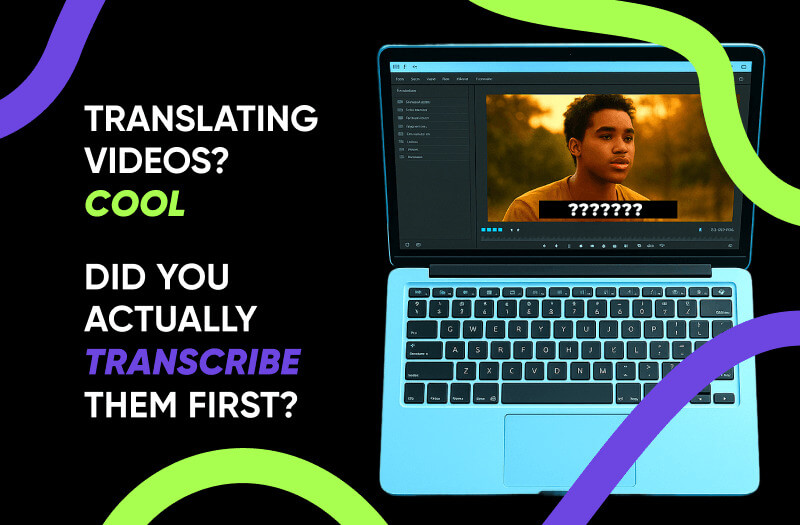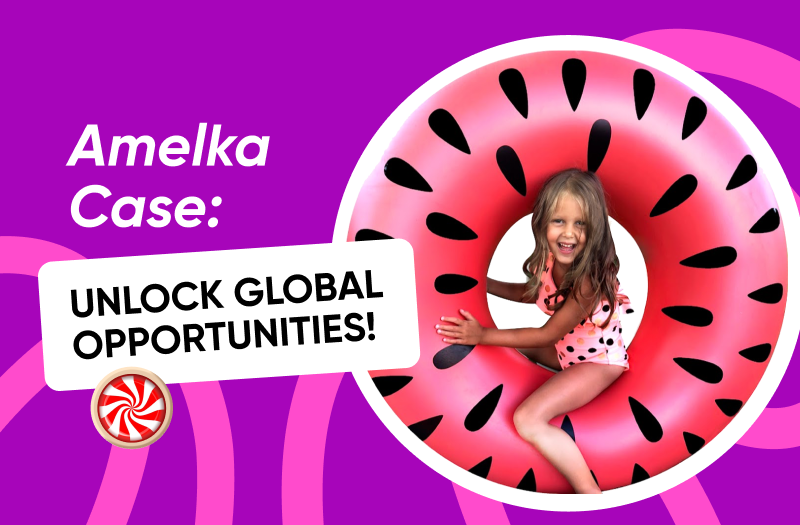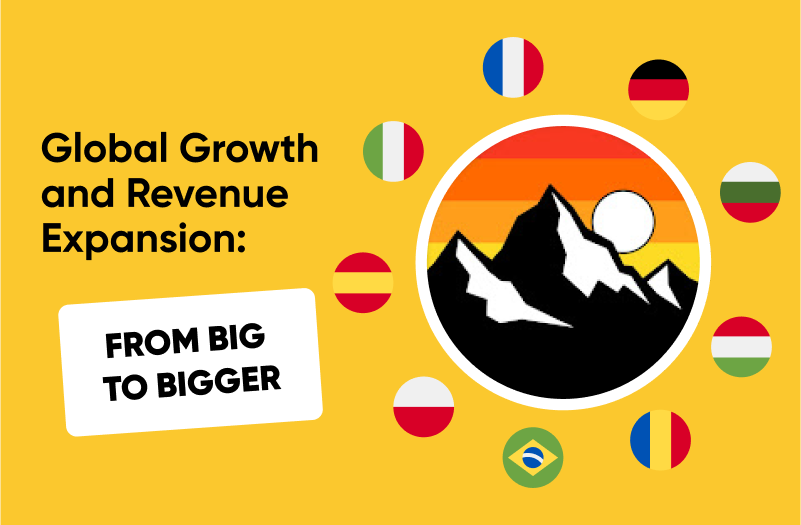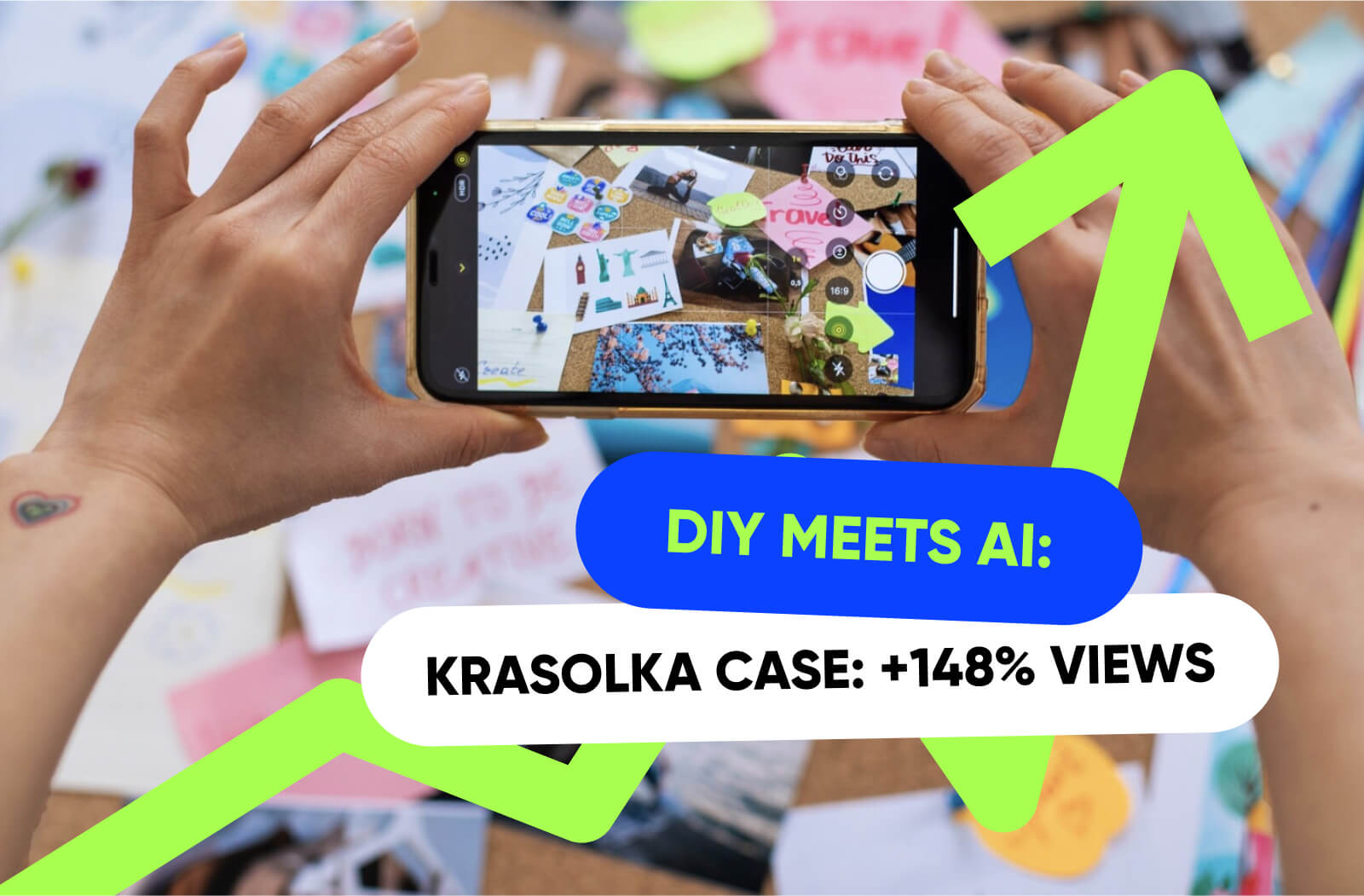01
Reason 1: Your viewers don’t always listen
02
Reason 2: Better transcripts = better translations
03
Reason 3: It boosts YouTube SEO
04
Reason 4: More watch time, better retention
05
Reason 5: You can train your AI tools
06
Reason 6: You protect the pacing and meaning in dubbing
07
Reason 7: You make your content future-proof
08
Reason 8: It’s a multiplier for repurposing content
09
So, What’s Next?

Not Sure Which Languages to Choose?
What’s the real value of transcribing a translated YouTube video? For some, it sounds like just another tedious step in post-production. But for those who’ve worked with hundreds of creators translating content into dozens of languages, we can tell you: not transcribing is the hidden leak in your content strategy.
We’ve tested it across channels with millions of subscribers and creators just entering global markets. We’ve seen the data: higher retention, longer watch times, better search visibility, and far fewer drop-offs when a clean transcript backs the translation.

A tech creator comes to us after translating a few videos into Spanish. They used a decent AI tool and published. At first, things look good – views go up. But over time, the growth stalls. They dig into analytics and realize something’s off: their Spanish-speaking audience isn’t watching past the first minute. Clicks aren’t converting into watch time, and retention is weak. What went wrong?
The answer, more often than not, is simple: the transcription wasn’t clean. They didn't run the quality check with the natives at the very start. And if the transcript’s off, everything that comes after, translation, dubbing, even YouTube’s own indexing, falls apart.
Overall, text transcription is the main goal for subtitles. Of course, YouTube has learned to transcribe the English version as well as Spanish, Portuguese, and the top popular languages, which cannot be said about other languages, where the transcription is inferior in quality.
So, here is why clean transcribing your video translation to text is the foundation of scaling global content.
Reason 1: Your viewers don’t always listen
We’re not just talking about hearing loss here, though let’s be clear, making content accessible should already be a default. What we mean is that most of your viewers aren’t even turning the sound on. Studies by Verizon Media and Publicis Media show 69% of people watch videos without sound in public places. Even at home, 25% watch sound-off.
Suddenly, the quality of your subtitles or transcript becomes the deciding factor for whether your message lands at all. No matter how compelling the music, the voice acting, or the dramatic pause in the dubbing, none of it matters if they’re reading.
CBS News reported that over 50% of Americans keep subtitles on either some or all of the time. It’s not about disability; it’s about noise, accents, poor mixing, even preferences. And all of it starts with the transcript.
Reason 2: Better transcripts = better translations
Most creators still think of transcription as something you do after the fact – a box to check once the content is done. But if you’re translating, the transcript is a foundation.
AI dubbing tools, human voice actors, and subtitling systems all need a clean, time-coded transcript that matches the original pacing, includes nuance, and gives native translators something solid to work with.
When you give rushed transcripts, machine outputs with no review, it’s a laggy dub, awkward phrasing, and timing issues. But when you can work with a refined transcript, the results sound human, natural, and emotionally in sync with the original.
We always recommend that creators review their transcripts with native-speaking editors before feeding them into translation workflows. It’s the difference between an okay translation and one that truly resonates.

Reason 3: It boosts YouTube SEO
YouTube uses your title, tags, description, and transcript to decide who sees your video.
Every word in your caption file becomes a searchable context. That means when someone searches in their native language, YouTube can now match not just your metadata and SEO, but actual moments from the transcript. And with YouTube’s new AI search feature, rolling out to Premium users in the US, this has never mattered more.
This AI feature creates carousels based on exact transcript snippets. So if you’re talking about “how to build a greenhouse on a balcony” at minute 4:16, that’s the moment YouTube can show in search, but only if your transcript is accurate and detailed.
That’s the time when your content becomes instantly usable, even if someone never watches the full video.
Reason 4: More watch time, better retention
Across hundreds of videos, high-quality subtitles built on clean transcripts increase retention by 13–25%. Because reading keeps people engaged when the audio alone doesn’t.
Want to take your content global?
Subtitles, dubbing, multi-language audio, localized metadata, full channel builds – we’ve done it all. Including for creators who grew to 10M+, 50M+, even 100M+ subscribers. Get in touch with us and let's choose what translation option is best for you.
When someone understands every word, whether it’s a joke, a tutorial step, or an emotional line, they stay longer. And the longer they stay, the more YouTube recommends your video.
Check your own analytics. Go to your YouTube Studio and see how many viewers watch with captions turned on. You’ll be surprised.
Reason 5: You can train your AI tools
AI video transcription tools have come a long way, but they still need clean input. The better your original transcript, the more accurate your translated outputs.
Translating a messy transcript creates compounding errors. Words get swapped, idioms mistranslated, and timing thrown off. But a clean transcript, reviewed by a native speaker, helps train the translation model, improves dubbing sync, and reduces edit rounds.
The native speaker makes sure that the stylistic features sound natural in another language, that the pacing matches the original version (not lagging behind, not rushing), and that the accents in the dubbing are conveyed correctly.
In other words, transcribe first. Then translate. Then dub. That’s the workflow that scales.
Reason 6: You protect the pacing and meaning in dubbing
When you’re preparing a video for AI dubbing or professional voice actors, you need to control the rhythm.
A tight, time-coded transcript helps match pacing perfectly. It ensures emotional beats land at the right moment, that pauses feel natural, and that dialogue doesn’t feel rushed or lagging.
It also gives more than just words. That can be interpreted as sarcasm, emphasis, and style, and help the dubbed version sound like it was written in the new language, not copied.
Without transcription, dubbing is a guessing game.
Creators from YouTube’s Top 10 Translate with Us!
Let’s pick the best translation strategy for your channel!
Reason 7: You make your content future-proof
As voice search grows, so does the importance of transcript data.
Remember: AI tools for Google’s search, YouTube’s video chapters, and even TikTok’s discovery systems are moving toward transcript-based indexing. If your content doesn’t have a solid transcript, it’s invisible to those systems.
This is especially true for translated content. If your Spanish dub doesn’t have a transcript, YouTube can’t index it properly for Spanish-speaking search queries. You're competing for attention, and transcribed content has the edge.
Reason 8: It’s a multiplier for repurposing content
When you transcribe video to text, you’re creating a source file that can turn into dozens of new content assets.
Turn a 12-minute tutorial into a blog post, a carousel on Instagram, quote cards for X, or an email series. That expert interview breaks down into a podcast outline, tweet threads, or a lead magnet for your newsletter.
And translated transcripts can be repurposed, too. Now you have multilingual content assets that work across platforms and countries. This is content scalability.

So, What’s Next?
What happens when every translated video you publish is powered by a clean transcript, tuned for search, optimized for clarity, and localized for real humans?
You’ll see more retention. More engagement. More earnings.
Transcription is the first step. And we can help you take it.
AIR Media-Tech has helped creators reach over 100 million global viewers by handling transcripts, translations, studio-level dubbing, and translating content growth to tens of millions of views. We’re localizing ideas and minds, and it all starts with a proper transcription.
Want to see where your channel could go with a multilingual strategy that works? Get in touch with our team for a full audit. We can help you determine what steps will bring the most growth, where your current translations might be falling short, and how to transcribe a YouTube video in a way that sets up success from the start.
Because without a good transcript, you're giving up longer watch times, better retention, smarter SEO, and global scale. And that’s a cost you shouldn’t pay!






